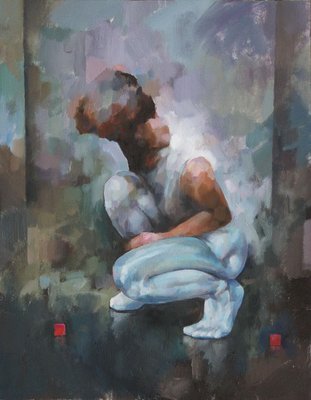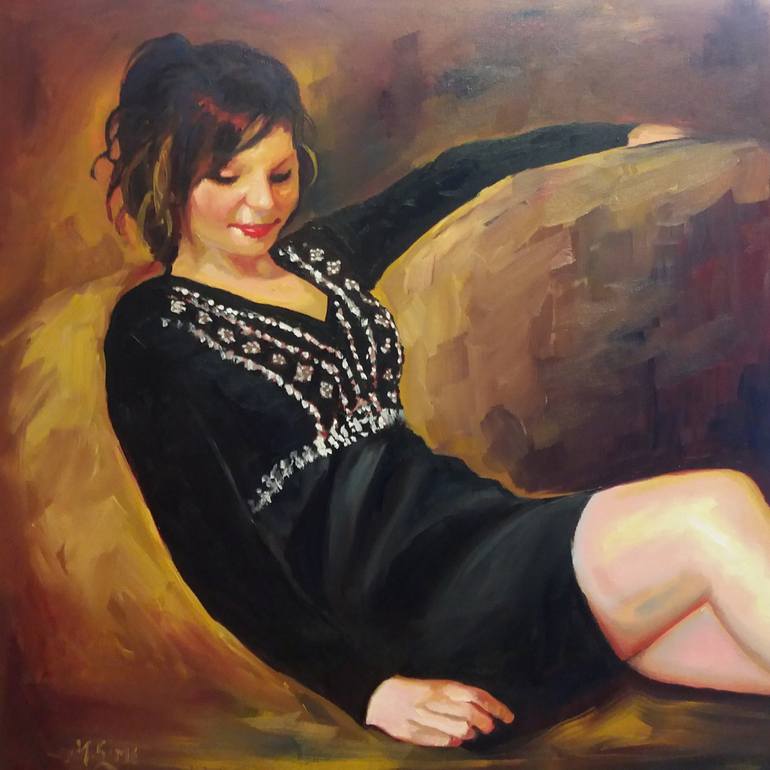The Development of Figurative Oil Painting: Recognizing Its Historic Relevance and Modern Interpretations
The development of figurative oil paint functions as a compelling lens via which to examine the interaction in between creative expression and historical context. From the thorough naturalism of the Renaissance to the stirring power of the Baroque, each age has added layers of definition and strategy to this timeless medium. Contemporary artists, attracting from this rich heritage, are now reinterpreting the human number in methods that challenge typical stories. As we explore these changes, one need to take into consideration exactly how the dialogue in between existing and past informs not just artistic technique yet likewise societal representations in an increasingly intricate world.
Beginnings of Figurative Oil Paint
The origins of figurative oil paint can be traced back to the early Renaissance in Europe, specifically in the 15th century. This period noted a significant separation from the level representations and stiff kinds characteristic of medieval art. Musicians started to check out naturalism, stressing the human number and its emotional expression. The advancement of oil paint enabled higher deepness of shade and information, improving the realism and vibrancy of their job.

In this transformative age, figures were typically depicted within contextually abundant settings, showcasing not just their physical qualities however likewise their mental states. Pioneers such as Jan van Eyck and Titian harnessed the medium's versatility, using layering strategies to attain luminance and structure. This development helped with the portrayal of detailed materials and the subtleties of skin tones, adding to the development of portrait and narrative scenes.
Moreover, the Renaissance emphasis on humanism fostered an appreciation for individualism, which subsequently affected artists to create even more vibrant and relatable figures - figurative oil painting. Because of this, metaphorical oil paint emerged as an effective vehicle for narration and emotional involvement, preparing for future imaginative movements and styles
Secret Historical Movements
Considerable historic movements have actually formed the advancement of figurative oil paint, each contributing one-of-a-kind viewpoints and strategies that broadened the tool's possibilities. The Renaissance noted a turning point, highlighting realistic look and the human form, with musicians like Leonardo da Vinci and Michelangelo pressing the boundaries of anatomical precision and perspective. Following this, the Baroque age brought dramatic contrasts of light and darkness, exhibited by Caravaggio, who instilled spiritual themes with extreme emotionality.
The 19th century presented Romanticism and Realism, where artists such as Delacroix and Courbet tested classical perfects, focusing on private expression and day-to-day life. The introduction of Impressionism better transformed the medium by stressing the effects of light and color, causing a separation from conventional depiction.
In the very early 20th century, movements like Expressionism and Cubism redefined figurative painting via abstraction and the expedition of emotional deepness. Each of these activities not only reflected the social modifications of their times however additionally prepared for contemporary interpretations. The interaction in between these historic activities has actually created a rich tapestry of styles and viewpoints, affecting modern-day musicians in their search of recording the human experience on canvas.
Techniques and Materials Development

Throughout the Baroque period, methods such as chiaroscuro and sfumato emerged, boosting the psychological vibration of metaphorical make-ups. Artists started to trying out glazes and impasto, controling texture and brightness. By the 19th century, technologies like making use of pre-mixed paints in tubes reinvented accessibility, permitting artists to repaint en plein air and catch the short lived effects of light.
The 20th century observed the introduction of artificial pigments and mediums, which expanded the combination and altered the consistency of oil paints. The exploration of brand-new application techniques, such as combination blades and brushes of varying tightness, more diversified creative expression. Jointly, these advancements show the evolving connection in between products, methods, and the creative vision integral in figurative oil painting.

Contemporary Analyses
Contemporary interpretations of figurative oil painting mirror a vibrant discussion in between practice and innovation, where artists challenge developed standards and explore varied motifs. This evolution manifests in various ways, as contemporary artists mix timeless strategies with contemporary concepts, usually dealing with social, political, and individual narratives.
Lots of professionals draw inspiration from historical jobs, yet they instill their pieces with contemporary viewpoints, using the human kind as a lorry for commentary on identification, culture, and gender. Artists progressively try out abstraction, distortion, and multimedias, which permits a broader analysis of the number and its context.
Additionally, making use of vibrant color schemes and unique structures often offers to interrupt conventional viewing experiences, prompting vital engagement from target markets. This shift in emphasis prolongs beyond visual appeals; it mirrors an expanding awareness of the intricacies of human experience in an interconnected world.
As metaphorical oil painting remains to progress, it remains an essential medium for discovering the nuances of modern life, symbolizing both a regard for heritage and a commitment to modern idea. The result is an abundant tapestry of expression that resonates with the intricacies of the modern human problem.
Influence On Modern Art
The effect of metaphorical oil continue reading this painting on contemporary art is extensive, as it has constantly influenced a myriad of creative motions and practices throughout the click 20th and 21st centuries. From Expressionism to Surrealism and past, the expedition of the human figure has stayed a main motif, allowing artists to communicate intricate feelings and stories. This focus on figurative representation has resulted in a re-examination of standard strategies, causing innovative methods that blend realism with abstraction.
Additionally, modern musicians have actually welcomed figurative oil painting as a means to deal with social and political problems, using the medium to challenge understandings of identity, culture, and gender. The revival of interest in figurative operate in current years mirrors a wishing for link in an increasingly electronic world, where human experience and emotion are critical.
Additionally, the discussion in between metaphorical oil painting and modern-day art appears in the jobs of musicians such as Kehinde Wiley and Jenny Saville, who make use of historic referrals while instilling their items with contemporary relevance. Inevitably, metaphorical oil painting remains to form and redefine contemporary creative expression, underscoring its long-lasting relevance in the art world.
Conclusion
The advancement of figurative oil paint emphasizes its historical significance and flexibility throughout various imaginative motions. From the naturalism of the Renaissance to the emotive expressions of the Baroque and the cutting-edge methods of modernity, this medium has actually continuously transformed. Contemporary analyses show non-traditional make-ups and dynamic shades, promoting vital engagement with political and social themes. Eventually, figurative oil paint remains a crucial medium for exploring the human experience, resonating exceptionally in today's electronic landscape.
The advancement of figurative oil painting serves as an engaging lens through which to analyze the interaction between creative expression and historic context.Substantial historical motions have actually formed the evolution of figurative oil painting, each contributing one-of-a-kind philosophies and techniques that broadened the tool's opportunities.As historic motions formed the trajectory of metaphorical oil paint, the materials and methods utilized by musicians have actually additionally undertaken substantial more changes. figurative oil painting.The effect of figurative oil painting on contemporary art is profound, as it has consistently inspired a myriad of creative motions and methods throughout the 20th and 21st centuries.The development of figurative oil painting highlights its historical importance and versatility across different artistic movements